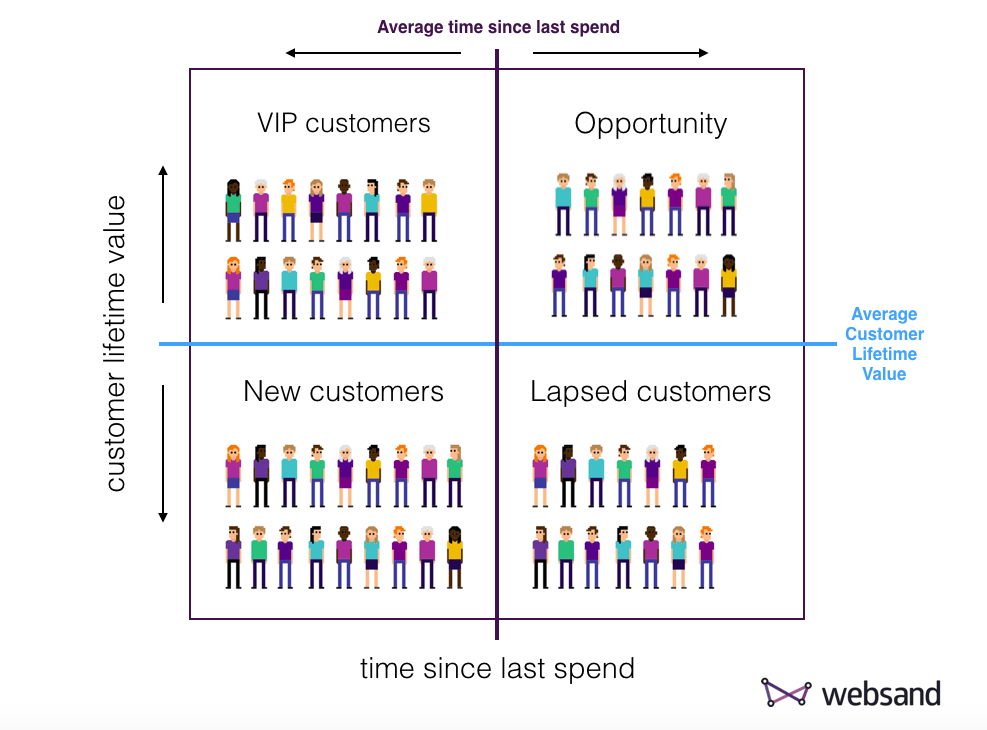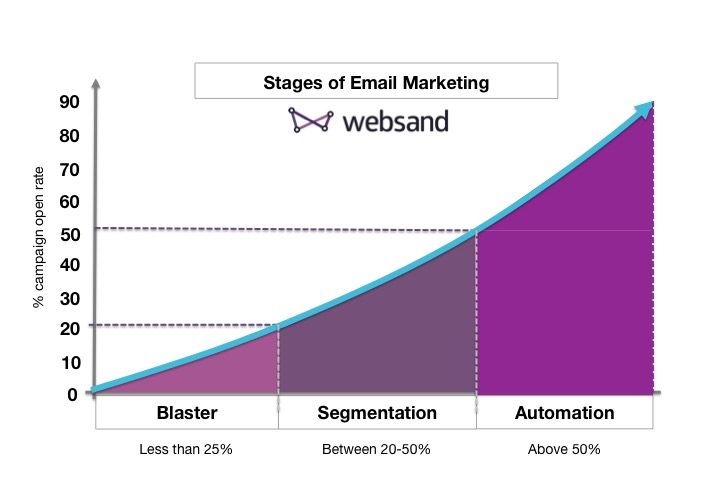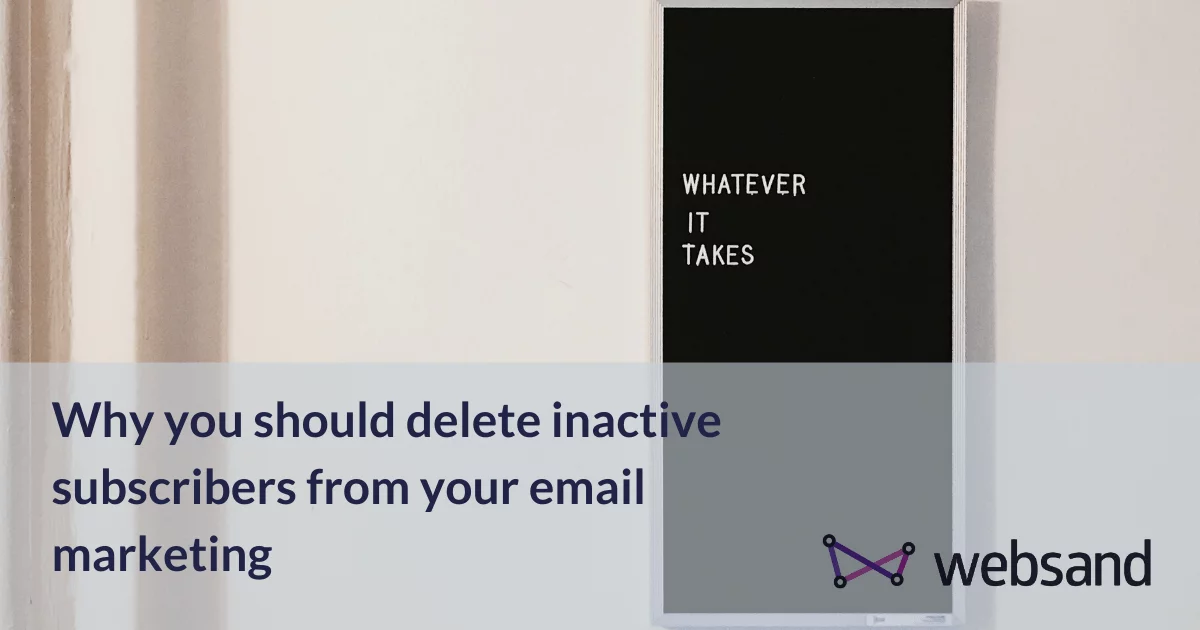Should you delete inactive subscribers from your email marketing?
Blog originally posted Feb 2016, reviewed and updated June 2020.
A good blog post should generate an emotional response. A Towerdata email referring to a Mailchimp blog post certainly got that from us.
The title of the blog that got my goat back in 2016 was… “Inactive Subscribers are Still Valuable Customers“.
The gist of the blog post was that your inactive subscribers are worth 1/3 of an active subscriber. Now Mailchimp have a lot of resources and they’ve did a lot of analysis on this, over 6 billion emails worth. They even developed a calculation ratio to prove the point.
But that opinion is now way out of date, even by Mailchimp
Changing opinions about deleting Inactive Subscribers
Removing data used to be frowned upon. The main reason, we’ll need that data…one day. It’s a concept we refer to as “rainy day data”. That’s data you’ve collected but you don’t really need anymore. Inactive subscribers is a perfect example of ‘rainy day data’
It’s now best practice to remove inactive subscribers from your email marketing, and that’s not just because of GDPR. Here’s why you should be deleting inactive subscribers from your email marketing.
Better results. If you remove the people that proven NOT to engage with your email marketing, you’ll get better results. Now that can be challenging as I know a lot of ecommerce folks consider audience size to be a KPI of their performance. But it’s the sales that matter. If someone is proven to not be interested despite your best efforts, best you both move on.
Improved deliverability. If you are showing better engagement, you are way less likely to be blacklisted and blocked from the inbox.
Better ROI. Most email marketing services (including Websand) is priced based on the audience size rather than the number of sends. So if you are retaining unengaged and inactive subscribers you’ll be paying for the privilege.
Privacy by Design. GDPR has changed the rules on what you can and cannot do with the personal data you’ve collected from your subscribers. You can’t keep subscriber data forever. You need to define and justify why you need to keep that data. Could you do that for inactive subscribers?
So deleting inactive subscribers is a practice we’d highly recommend. But it’s not recommended by us, it’s also recommended by some unexpected sources, here’s why blogger Yaro Starak deleted half of his list.
Principles to adopt to get the most from your email marketing.
So where should you start? Here are three principles to consider before your start the process of deleting inactive subscribers.
- You should organise your email marketing data.
- Define what an inactive subscriber is for your business. Typically in strictly email terms – an inactive subscriber is someone who hasn’t interacted with your email marketing for the last six months.
Segment your audience.
The key to remove inactive subscribers from your email marketing is to get your email audience managed. So it’s time to segment your audience. Here are some things you need to consider.
Customers are more important than Subscribers
As our marketing automation software tracks full customer behaviour – marketing events as well as spend activity (basically if you capture it we can help you segment and market to that audience).
We think marketing should be built around customer lifetime value rather than generic lists, so we refer to prospects or customer rather than a general term of subscribers.
Websand links the customer information to the spend information, so we can easily separate the customers from the prospects, and the VIP’s from those that haven’t bought for a while so you can communicate with them more effectively.
Be that nurturing a prospect to a customer, moving an existing customer from their first sale to their second sale, or managing a retention process for an existing customer at the end of a warranty or contract end date.

Once you’ve got your data organised into customer groups, it’s so much easier to get creative as you already have the audience in mind, and the objective you are looking to achieve.
With that in mind here are some suggestions to help you move your audience along and gain some extra sales revenue from your marketing.
Float like a butterfly, sting like a bee.
We think that’s a great rule to apply when you are planning your marketing campaigns, especially in the early stages when nurturing your prospects to customers.
Float like a butterfly in that you should be informative, helpful and make them feel welcomed. Don’t be pushy. Gently does it.
Sting like a bee in the incentives that you offer. Understand how much you can offer – by understanding metrics such as Customer Lifetime Value. Make the offer rewarding. Build urgency, make the offer time sensitive.
Make that communication relevant.
Now if that doesn’t work, what do you do?
This is where the uniqueness of your business and your marketing strategy come into play.
The number of rounds that you want to apply to prospects depends on your business.
If your product or service has a long decision cycle, then your nurture programme should reflect that time. If your product or service is widely available elsewhere then your strategy would be faster.
If someone has signed up to your marketing and after the prospecting campaign they haven’t purchased, then perhaps they’ve gone elsewhere or perhaps the timing isn’t right for them at the moment. They remain in the ‘interested’ capacity.
If you run another ‘prospecting’ round and they still aren’t interested. Then you are being told something. It’s not the right time for them.
The big question is at what time do you give up on them.
It depends on the business and the circumstances, but we suggest to work to 15-20 emails with no tracked Email Activity Metrics as a flag to mark as inactive, and then set the appropriate data or marketing strategy based to the value of the contact.
For example, if they are a high value customer, then you might remove them from general marketing but wouldn’t remove the data. But if it’s a prospect you might remove them from the database.
Is this Business model driven or sound advice?
Marketing is about building relationships. To keep pestering people that clearly aren’t responding seems a bit, well, desperate.
At Websand, our business model has always been based on the number of customer records. Part of the reason we adopted that business model was to encourage clients to jettison customer or subscriber data that was now irrelevant.
So to be clear which side of the fence we sit on. (We) Websand encourage you to remove inactive data from your email marketing.
Dealing with the real inactive subscribers
Let’s say that you are running some ‘newsletter’ type messages as well as some trigger based campaigns over a period of six months.
If you have No email opens recorded, then I’d suggest it’s time to put the marketing to those people on hold and here is why.
For people that are inactive on the marketing but active as a customer.
If they’ve bought from you but haven’t opened any marketing information. No problem. They are buying from you.
If they aren’t active with the marketing – then stop marketing to them. I’d perhaps you no have need to regularly communicate with them while the continue to do so. Unless it’s really important value added stuff.
When they stop buying then your data driven marketing strategy will move into action and your retention campaign will move into gear. Perhaps that is the time you’ll get marketing activity from those people. If not then they are truly on the inactive pile and remove them from your marketing activity.
For people that are truly inactive. No engagement from the email and no sales.
If they haven’t bought from you, they either aren’t getting the marketing message or they simply aren’t interested.
Assuming that your prospect campaigns will be using marketing automation, the average engagement tends to be over 60%.

The person receiving your email already knows who you are.
They signed up in the first place.
You’ve provided incentives.
You’ve given them your best lines.
They’ve not worked.
So it’s time to move on.
In conclusion
It just makes business sense to be efficient, and that includes your email marketing. So you should delete inactive subscribers
The Mailchimp dataset is an interesting argument, but it’s got too many variables that don’t seem to have been considered.
Also, sending email marketing to people that want to receive your marketing messages, and not sending to people that simply ignore your messages – just makes sense from a brand and business perspective.
It’s also really important under GDPR. You need to prove that you are being relevant. So please stop sending marketing to people that ignore your messages do that.
Finally, take those inactive’s from your marketing activity and you’ll be spending less on email, and sending to a more engaged audience so the ROI will increase. Even a chimp can work that one out.
It’s time to start getting more from your email marketing
Sign up for a free Websand demo and let’s show you how to get the best from your email marketing.
